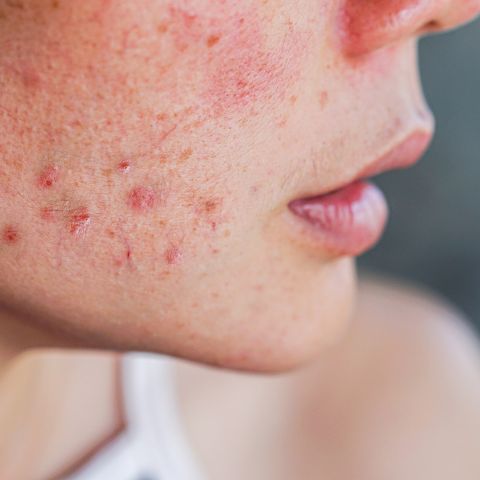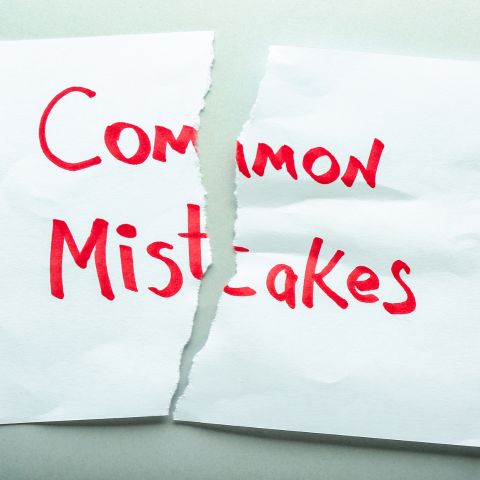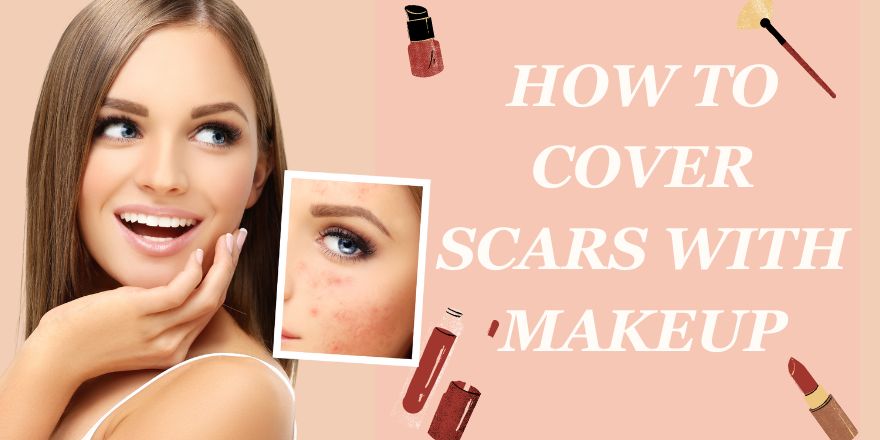Most of us deal with scars at some point in our lives. Whether due to injuries, acne, or previous medical procedures, scars can leave marks on our skin that we want to conceal. Luckily, with the right makeup products and techniques, you can easily hide your scars for a flawless appearance. To cover scars with makeup, apply primer for a smooth base, then use a full-coverage foundation to even skin tone. Dab concealer directly on scars, blending well. Set with translucent setting powder to lock in place. Finish with a setting spray for long-lasting wear and a flawless finish. Whether your scars are large or small, old or new, covering them up is possible with the transformative power of makeup.
In this beauty guide, "How to Cover Scars With Makeup", I will provide a step-by-step guide to covering scars with makeup effectively. While scars may never entirely disappear, you can make them less noticeable with these best makeup tips and tricks. We’ll walk you through color correcting, layers of coverage, application techniques, and recommended products that work wonders to hide discoloration, uneven texture, and other scar characteristics.
What is a Scar?
A scar on the face is skin damage that has fully healed but left behind a visible mark or discoloration. Facial scars can vary in size, shape, and severity based on the extent of the original injury or wound. Various accidents and incidents, including cuts, dog bites, burns, severe acne, piercings, surgery, etc, can cause scars on the face leading to skin imperfections.
Common Types of Scars
Scars come in different types based on depth, appearance, and texture. Knowing your scar characteristics helps you choose the most suitable concealer and application technique for the different types of scars. Combining makeup with scar treatments over time can improve texture for better coverage. The most common types of scars are as follows:

Hypertrophic and Keloid Scars
Scars with hypertrophic and keloid characteristics are thick, raised scars extending outside the original wound. They are the result of excessive collagen production during healing. These scars have irregular bumpy textures that are challenging to conceal fully with makeup alone.
Atrophic Scars
These scars occur when there's a loss of collagen during the healing process, resulting in pits or depressions in the skin. Common causes include acne, chickenpox, and varicella. The product needs to fill in the depressed areas to look natural.
Contracture Scars
Contracture scars are commonly seen after burns or other injuries that damage the deeper layers of skin. They can shrink and tighten the skin, which can restrict movement. Covering these scars requires special attention.
Stretch Marks
These scars appear when the skin stretches or shrinks rapidly. They're most common during pregnancy, puberty, and weight gain or loss. Stretch marks look like long, thin lines on the skin, which cannot be removed but softened with makeup.
Acne Scars
Acne scars are marks that are left behind after the acne has healed. They are caused by severe or cystic acne, which is characterized by conical-shaped growths, often with a visible whitehead, that damage the skin's texture. Acne scars can be depressed or raised, and often appear as discoloration, texture changes, or uneven skin. The common types of acne scars include ice pick scars, boxcar scars, and rolling scars.
Surgical Scars
Surgical scars are the result of incisions made in the skin or flesh during surgery or other medical procedures. They appear after the healing of these wounds and their appearance depends on the location, the individual's skin type, and the healing process. Surgical scars can be raised or thickened in some cases, but they are usually linear in shape and may appear red or pink when new, eventually fading to become pale over time.
Pigmented Scars
These scars are characterized by discoloration instead of raised or sunken tissue. They appear as flat, darker patches of skin compared to the surrounding area. Makeup works best at disguising pigmented scars.
Can Makeup Cover Scars?
Yes, makeup absolutely can be used to conceal and cover up scars. Even severe scars can be hidden with the best cosmetic brands products and application techniques. While makeup cannot completely erase scars, it provides an effective illusion of clear and flawless skin. Specialized concealers and color correctors are designed to neutralize discoloration, while full-coverage foundations and setting powders work together to create a smooth surface.
Various makeup techniques can be applied to conceal the scars and hide their appearance. Professional makeup artists use these techniques by providing better coverage to the scar areas and minimizing the visibility of scars for a more even skin tone. Those techniques include:
Layering:
Layering different makeup products is crucial for effectively concealing scars. Start with a color-correcting primer or concealer to neutralize discoloration, then apply a full-coverage foundation. Follow up with a heavy-duty concealer, specifically on the scar, blending the edges to create a seamless transition.
Blending:
Proper blending is key when concealing scars. Blend the color-correcting product, foundation, and concealer well, ensuring no harsh edges or lines of demarcation. This creates a natural, unified appearance that minimizes the visibility of the scar.
Baking:
Baking is a technique of applying a generous amount of translucent powder and letting it "bake" on the skin. It helps to set the concealer and foundation. This locks everything in place, preventing creasing or separating throughout the day and maintaining the uniform, flawless coverage over the scar.
Choosing the Right Makeup Products for Scar Coverage
Choosing the right makeup products plays a vital role in concealing your scars, to boost your confidence and self-esteem. Here are some major products you should consider to achieve a flawless complexion:
Primer
Primers are essential for creating a smooth, even base for makeup application, especially over textured areas like scars. Silicone-based primers can fill in the uneven texture of scars, reducing their appearance and creating a smoother surface for foundation and concealer to adhere to. Priming the skin before makeup application helps extend the wear and improve the overall coverage of the scar.
Foundation
The foundation is one of the best makeup to cover scars. The foundation is one of the best makeup to cover scars. The right foundation is crucial for achieving a natural-looking and seamless scar coverage. Look for a full-coverage foundation that matches your skin tone, needs of your skin type and has a long-lasting formula. Opt for a lightweight texture to prevent cakiness and ensure comfortable daily wear. Additionally, consider using a foundation with buildable coverage, as scars may require more product for effective camouflage.
Concealer
Concealers are your secret weapon when it comes to flawless scar coverage. You should choose a concealer with high pigmentation and a creamy consistency that will blend easily. Apply the concealer directly onto the scar using a small brush or your fingertips. Pat the product gently, ensuring it blends seamlessly with the surrounding skin.
Color Corrector
Color correctors are specialized makeup products that use contrasting colors to neutralize and camouflage discoloration, such as redness, hyperpigmentation, or dark shadows from scars. Green-tinted color correctors can counteract redness, while yellow-based correctors help diminish purple or blue-toned scarring. Applying color correctors before foundation creates an even, neutral canvas to conceal the scar.
Setting Powder
You should set your makeup with finely milled setting powder so your scar coverage remains intact. Choose a translucent powder that won't alter the color of your foundation and concealer. Apply a light dusting over the scarred areas using a fluffy brush to prevent creasing and prolong the wear of your makeup.
Applying the above-mentioned makeup on scars can hide the appearance of blemishes and imperfections on the skin by evening out the skin tone and texture. You can finish the makeup process by setting spay. It helps to lock the makeup application used to hide scars.
Effective Makeup Tools Needed For a Concealing Process
The choice of makeup tools can significantly impact the effectiveness and comfort of the scar-concealing process. The right tools can make all the difference in achieving the desired results. Selecting the appropriate makeup tools can simplify the concealment process and provide a more comfortable application experience. Here are some of the makeup tools that are needed for the concealing.
Makeup Sponges: Using a damp makeup sponge can help press and stipple the concealer and foundation into the scar for a seamless, natural-looking coverage.
Concealer Brushes: Flat, dense concealer brushes allow you to precisely apply and blend concealer directly onto the scar.
Angled Contour Brushes: The angled shape of these brushes makes it easy to apply and diffuse concealer along the edges of the scar.
Concealer Corrector Palettes: These palettes contain color-correcting shades like green, yellow, and purple that can help neutralize the appearance of scars before applying concealer and foundation.
Makeup Spatula: A small, flat makeup spatula can be used to scoop and apply thick, full-coverage concealers directly onto the scar.
Magnifying Mirror: A magnifying mirror can help you see the scar more clearly and apply your makeup with precision.
By using the above tools during the scar concealing process, you can easily achieve the desired results and helps you to build up coverage gradually and blend the edges seamlessly. You can experiment to find the right tools and techniques that work best for your specific scar type and skin.
How to Hide Scars With Makeup: 5 Easy Steps To Make Invisible
Scars don't have to define you. With the right makeup techniques and products, you can minimize their visible appearance and embrace your true beauty. Follow these 5 key steps to conceal scars for a flawless look:
1. Prepare Your Skin with a Primer or Concealer

Color-correcting primer or concealer is the first step for hiding scars with makeup. Color correctors neutralize discoloration and minimize the appearance of red, purple, brown, or other toned scars. Color corrector helps conceal scars without using heavy coverage. Applying a primer or concealer can help cancel out the scar's color before layering on the foundation and concealer. For example, green-toned color correctors help reduce the appearance of red scars. The green pigment helps neutralize and conceal the red tones. So proper color correction is the first critical step in the makeup process for hiding and minimizing the look of scars.
2. Foundation to match your skin tone

Applying a full-coverage foundation is a critical step for hiding scars with makeup. Full coverage foundations provide more pigment than lighter formulas, helping to mask discoloration, concealing red scars, and managing uneven textures completely. When using a full-coverage foundation to hide scars, it's important to find a formula that matches your exact skin tone.
3. Set with finishing powder

After applying foundation and concealer to conceal scars, it's important to set the makeup with finishing powder. The powder absorbs excess skin oils and sets the liquid makeup in place. This prevents creasing and makeup shifting over time. The finishing powder seals the liquid powder and makes the coverage last longer without fading, helping to conceal scars easily. Setting powder is the final step to sealing flawless coverage over scars all day.
4. Add concealer for better coverage

With a small concealer brush or makeup sponge, pat thin layers of concealer directly onto the scar. Building up layers slowly helps match your natural skin tone for a perfect finish. Let each coat dry before adding more concealer. The fuller coverage helps hide any remaining discoloration.
5. Finish with setting spray

The final step to hide scars with makeup is using setting spray. After applying color corrector, foundation, powder, and concealer, mist a makeup setting spray on your entire face. Hold the bottle about 8 inches away and close your eyes to distribute the spray evenly. The spray prevents the caking and fading of makeup over time. The setting spray provides a strong finish that seals in coverage over scarred skin.
Tips for Long-Lasting Coverage
No one wants to constantly reapply makeup throughout the day. Here are tips to keep scar coverage lasting:
- Finish with setting or finishing powder pressed into place with a soft brush. This locks makeup and prevents slipping.
- Use makeup sprays like setting or hydrating sprays to melt powder into a transfer-proof finish.
- Re-apply powder to the T-zone periodically if it gets oily and makeup starts to fade there.
- Invest in long-wearing foundations and concealers specifically formulated to last 12+ hours without breaking down.
- Apply a little translucent powder inside a pressed powder compact and touch up over scars midday if needed.
- Manage scar sensitivity and flaking with moisturizer so makeup easily glides on without accentuating dry patches.
Long-lasting coverage gives confidence all day without worrying about scars peeking through. With proper care and touch-ups, makeup can disguise scars seamlessly.
[Also Read: How to Make Makeup Last All Day]
Common Mistakes to Avoid While Covering Scars With Makeup
Covering scars with makeup can be an effective way to boost confidence and create a smoother appearance. However, it's important to approach the process with care to achieve a natural and comfortable look while also ensuring the health of your skin. Here are some tips on what not to do while covering scars with makeup.

Don't Use Thick and Heavy Products
The thick and heavy products will look unnatural and draw more attention to the scarred area. Choose lightweight liquid formulas that blend seamlessly. The lighter texture sits smoothly over the area, providing coverage without highlighting the scar.
Don't Apply Foundation Directly to a Scar Without Color-Correcting
When working to hide scars, it's important to only apply liquid foundation directly to the scarred area after first using a color-correcting primer or concealer. Without color-correcting, the discolored tones of scars will flash with the foundation, preventing you from achieving an even skin tone.
Don’t Overdo Concealer
While liquid or stick concealers provide fuller coverage for hiding marks, too many layers can make scars appear more noticeable. Excessive concealer often looks heavy, cakey, and unnatural.
Forgetting sunscreen
Scars are more susceptible to sun damage, which can make them more noticeable. Whenever you apply makeup, apply a broad-spectrum sunscreen with an SPF 30 or higher to protect your scar from harmful UV rays.
Remember to Set Liquid Makeup with Powder
It’s essential to set your foundation and concealer with powder. Liquid makeup alone will eventually crease, cake, and transfer on textured scar tissue. The powder finish keeps makeup flexible and comfortable as you go about your day. Skipping this step often leads to visible wear and fading of coverage. Take the time to set the foundation with a light finishing powder.
[Recommended to Read: Common Makeup Mistakes And How to Avoid Them]
Conclusion
Every scar tells a story, but that doesn’t mean you want them to show. Hiding scars with makeup takes skill, patience, and the right products. Following the above-mentioned techniques, you can learn to cover up scars with makeup. Finding the correct color correctors, concealers, and setting powders for your skin tone and scar type may take some trial and error. While makeup cannot magically erase scars, it can effectively minimize their visibility and create a smoother, more even skin tone.
Like this article? Share it with your friends by clicking the icons below!



